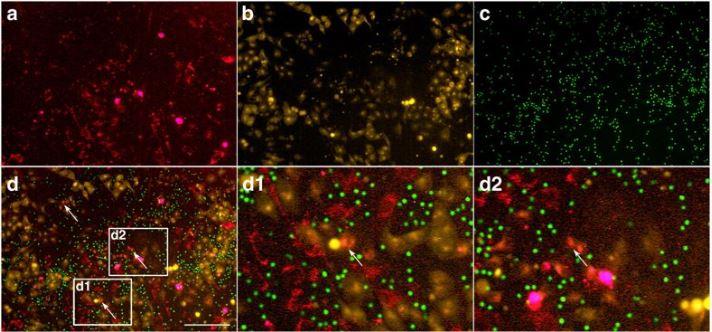
IMAGE: Analysis of self-organization of MSCs, Hela, and PBMCs after 72 h of co-culture. Arrows indicate fused cells. (A) Alexa Fluor 647 (MSCs), (B) PE (HeLa), (C) FITC (PBMCs), (D, D1,… view more
Credit: Kazan Federal University
It was shown that co-culturing HeLa adenocarcinoma cells, peripheral blood mononuclear cells, and mesenchymal stromal cells results in changes in the proliferative activity of the peripheral blood mononuclear cells and mesenchymal stromal cell populations.
She will be allocated 600 thousand rubles in funding for her inquiries into oncosuppressors and apoptosis activation.
“Currently, it’s very important to find new ways of cancer therapy that could be effective, targeted and not very toxic. Traditional chemotherapy is marked by low specificity, which leads to heavy side effects like damage to normal cells of the spinal cord, lymph, epithelium, or hair follicles. That’s why we work on new methods based on gene and cell technologies that can be both effective and safe,” says the winner.
Dr. Solovyova adds that oncosuppressors and apoptosis activators selectively destroy cancer cells, and immunomodulators stimulate the organism to fight the tumor. In her latest study, it was shown that co-culturing HeLa adenocarcinoma cells, peripheral blood mononuclear cells, and mesenchymal stromal cells results in changes in the proliferative activity of the peripheral blood mononuclear cells and mesenchymal stromal cell populations.
###
Disclaimer: AAAS and EurekAlert! are not responsible for the accuracy of news releases posted to EurekAlert! by contributing institutions or for the use of any information through the EurekAlert system.

